The OPPO Reno 10x Zoom Review: Bezeless Zoom
by Andrei Frumusanu on September 18, 2019 10:00 AM EST- Posted in
- Mobile
- Smartphones
- Oppo
- Snapdragon 855
- Oppo Reno 10x Zoom
System Performance
Following our Snapdragon 855 device overview, we should be relatively familiar with how the Xiaomi Mi9 performs. The chipset is by now a very well known component and various devices with the silicon will only ever differ by the software stack implementation by the vendor.
In Xiaomi’s case in the Mi9, I didn’t see anything particularly standing out for the phone, performing quite well but also not particularly distinguishing itself as being among the best nor worst performers amongst its Snapdragon 855 siblings.

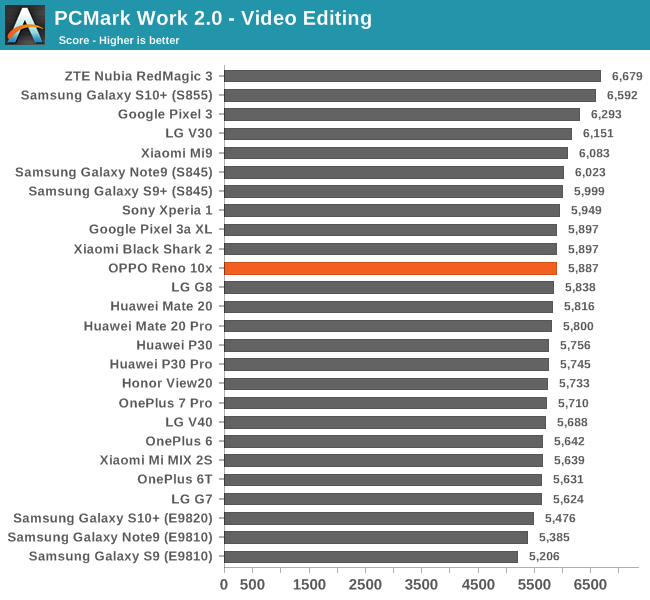
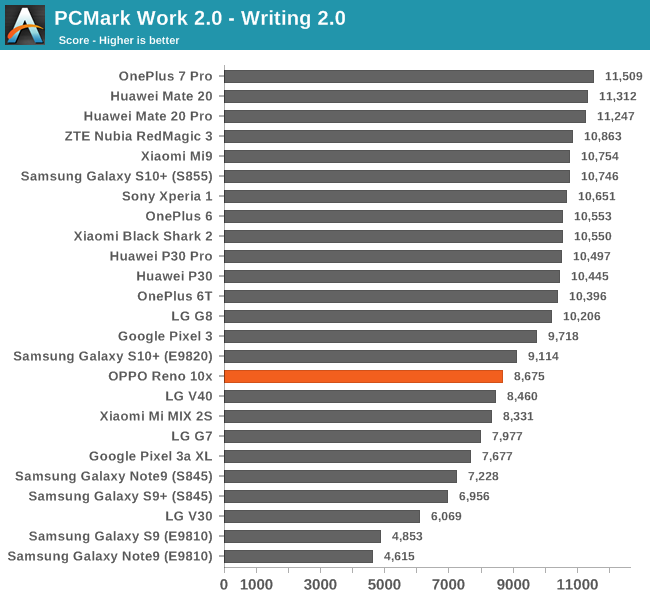
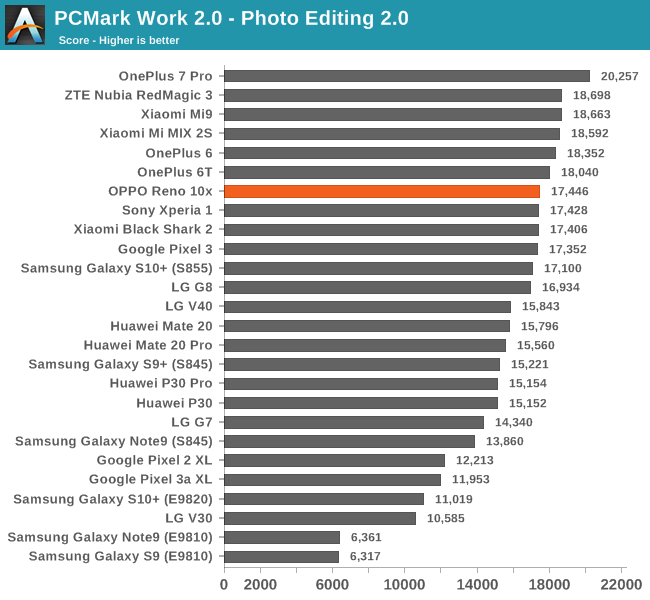

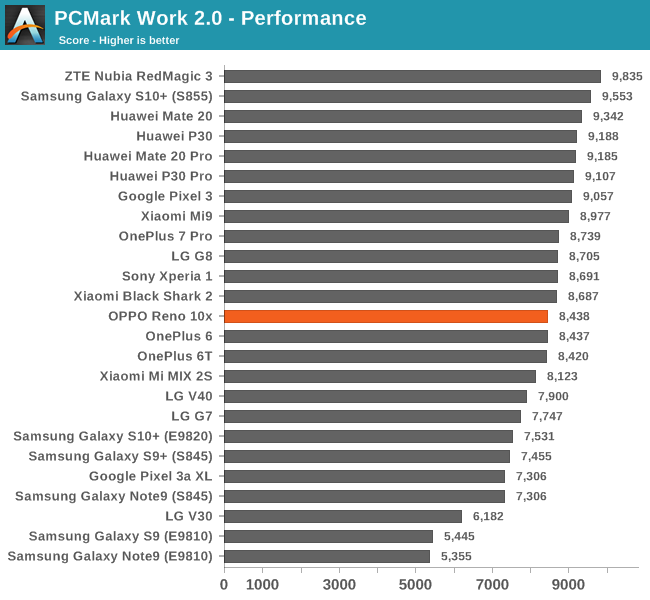
Unfortunately, in the default mode in PCMark, the Reno 10x didn’t quite keep up with some other Snapdragon 855 devices, ending with actually some of the worst scores amongst its competition, something particularly visible in the web browsing and writing sub-tests. Here it looks like Oppo chose to tune the software quite conservatively compared to other vendors.
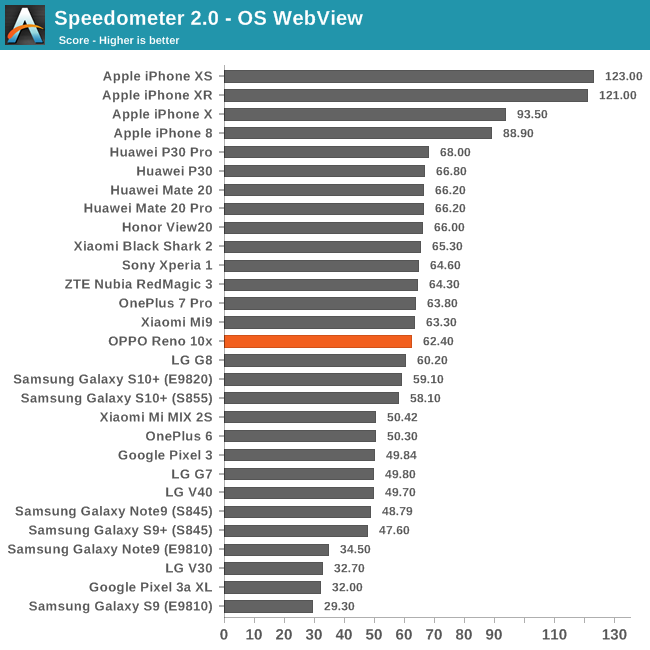
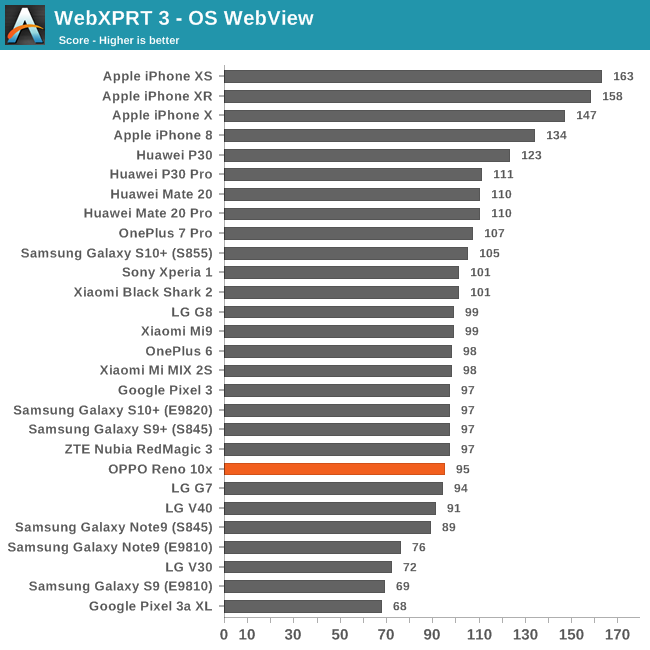
In the JS browser performance tests, we also find that the Reno 10x lands amongst the lower performance devices, although the absolute differences here are more minor.
In my subjective experience with the phone, it’s again much like on other Snapdragon 855 phones: Whilst the Oppo does feel ever so slightly slower than other flagship devices, the difference isn’t all that big and it’s still a plenty fast phone. I suppose it’s a balance Oppo chose to make in order to improve the battery efficiency of the phone, which we’ll get back to in a later section.










40 Comments
View All Comments
Alistair - Wednesday, September 18, 2019 - link
Everytime I get excited by new phones I check the weight and am shocked at how heavy they are. The iPhone XR is very wide and heavy also, all these phones are 190g to 250g.I'll take the LG G8 or Samsung S10 just for the weight savings (150-160g), I'll keep the notch or hole instead.
Andrei Frumusanu - Wednesday, September 18, 2019 - link
Wholeheartedly agree.close - Saturday, September 21, 2019 - link
Phones get bigger and the weight scale of phone materials tends to follow the famed "premium feel" scale (polycarbonate<aluminum<glass<ceramic<steel) promoted for years.This is larger than an S10+ or a G8 but other than that is there anything in particular that would make it heavier than any other phone with Gorilla Glass front and back and steel frame? Wonder if the mechanical motorized slide-out camera is a major contributor.
flyingpants265 - Wednesday, September 18, 2019 - link
Wow, the thing that matters the absolute least out of every aspect of a phone..Alistair - Wednesday, September 18, 2019 - link
If you use it a lot and you feel fatigued because it is too heavy or hard to hold, that is the most important aspect of a "mobile" phone.Alistair - Wednesday, September 18, 2019 - link
Like how people don't care about the weight of their laptop, unless their use case is carrying it around in their backpack all day.StevoLincolnite - Wednesday, September 18, 2019 - link
It's not the end of the world.250g isn't significant, I work out... If it's an issue for you, perhaps you should too?
antifocus - Wednesday, September 18, 2019 - link
It's about the perception of the weight, the extra 250g can very well make you uncomfortable during travel.nils_ - Sunday, September 22, 2019 - link
That's the part where I care about it the least, though I generally don't care as much about the weight or height. If the compromise is between weight/height and performance/cooling, I'd rather have more performance.Notmyusualid - Sunday, October 6, 2019 - link
Whimp.